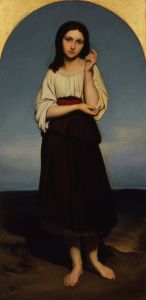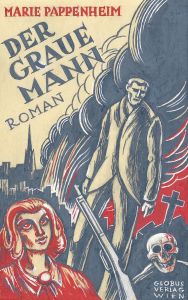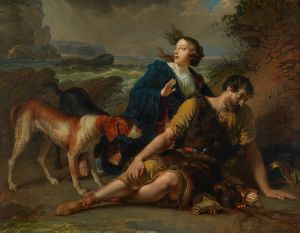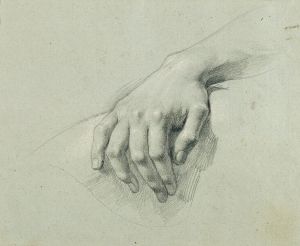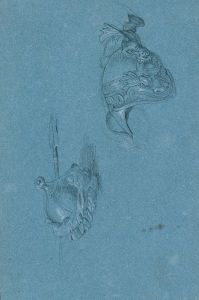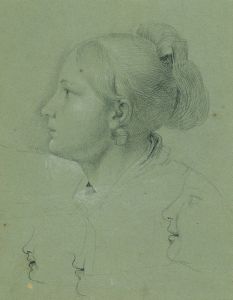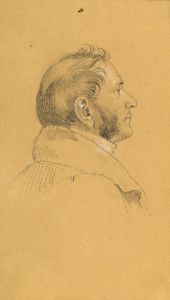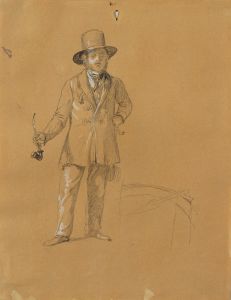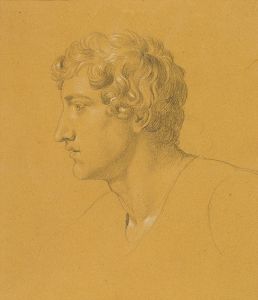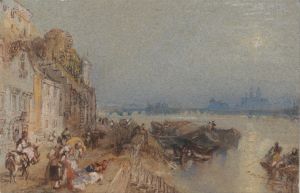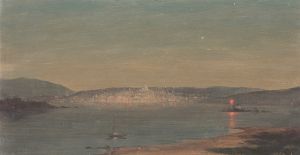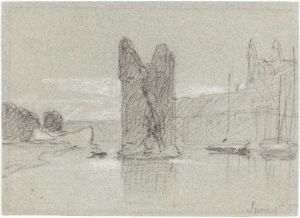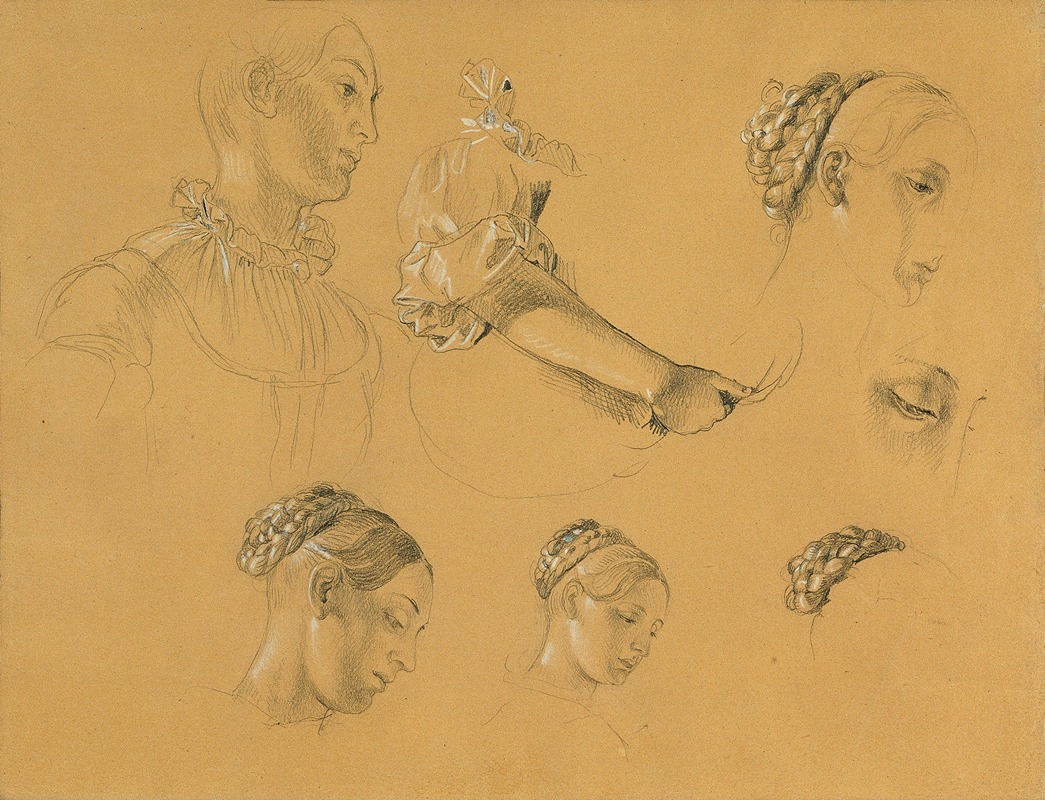
Studie zu ‘Hermann und Dorothea im Weinberg’
A hand-painted replica of Johann Peter Krafft’s masterpiece Studie zu ‘Hermann und Dorothea im Weinberg’, meticulously crafted by professional artists to capture the true essence of the original. Each piece is created with museum-quality canvas and rare mineral pigments, carefully painted by experienced artists with delicate brushstrokes and rich, layered colors to perfectly recreate the texture of the original artwork. Unlike machine-printed reproductions, this hand-painted version brings the painting to life, infused with the artist’s emotions and skill in every stroke. Whether for personal collection or home decoration, it instantly elevates the artistic atmosphere of any space.
Johann Peter Krafft was an Austrian painter known for his historical and genre scenes, and one of his notable works is "Studie zu ‘Hermann und Dorothea im Weinberg’" (Study for 'Hermann and Dorothea in the Vineyard'). This painting is a study related to the larger theme of Goethe's epic poem "Hermann and Dorothea," which was published in 1797. The poem is a significant work in German literature, depicting the story of two young lovers set against the backdrop of the French Revolution's impact on German territories.
Krafft's study focuses on a particular scene from the poem where the characters Hermann and Dorothea are in a vineyard. This setting is crucial as it symbolizes fertility, growth, and the nurturing of relationships, themes that are central to Goethe's narrative. Krafft, known for his attention to detail and ability to capture the essence of literary works, uses this study to explore the dynamics between the characters and their environment.
The painting reflects Krafft's academic training and his ability to convey emotion and narrative through composition and color. As a study, it likely served as a preparatory work for a larger, more detailed painting or series of paintings. Such studies were common practice among artists of the time, allowing them to experiment with different elements before committing to the final piece.
Krafft's work is characterized by its clarity and precision, qualities that are evident in this study. The figures of Hermann and Dorothea are rendered with careful attention to their expressions and gestures, which convey their emotional states and relationship. The vineyard setting is depicted with a sense of realism, capturing the lushness and vitality of the natural world.
Johann Peter Krafft was born in 1780 in Hanau, Germany, and later moved to Vienna, where he became a prominent figure in the art scene. He studied at the Academy of Fine Arts in Vienna and was influenced by the Neoclassical style, which is reflected in his structured compositions and emphasis on historical and literary subjects. Krafft's ability to translate literary themes into visual art made him a sought-after painter for historical and genre scenes.
Throughout his career, Krafft received numerous commissions and accolades, contributing to his reputation as a leading artist of his time. His works are held in various collections, including museums and galleries in Austria and Germany, where they continue to be studied and appreciated for their artistic and historical significance.
"Studie zu ‘Hermann und Dorothea im Weinberg’" exemplifies Krafft's skill in capturing the essence of literary works and his contribution to the visual arts during the 19th century. His ability to blend narrative and visual elements makes this study a valuable piece for understanding the intersection of literature and art during this period.





